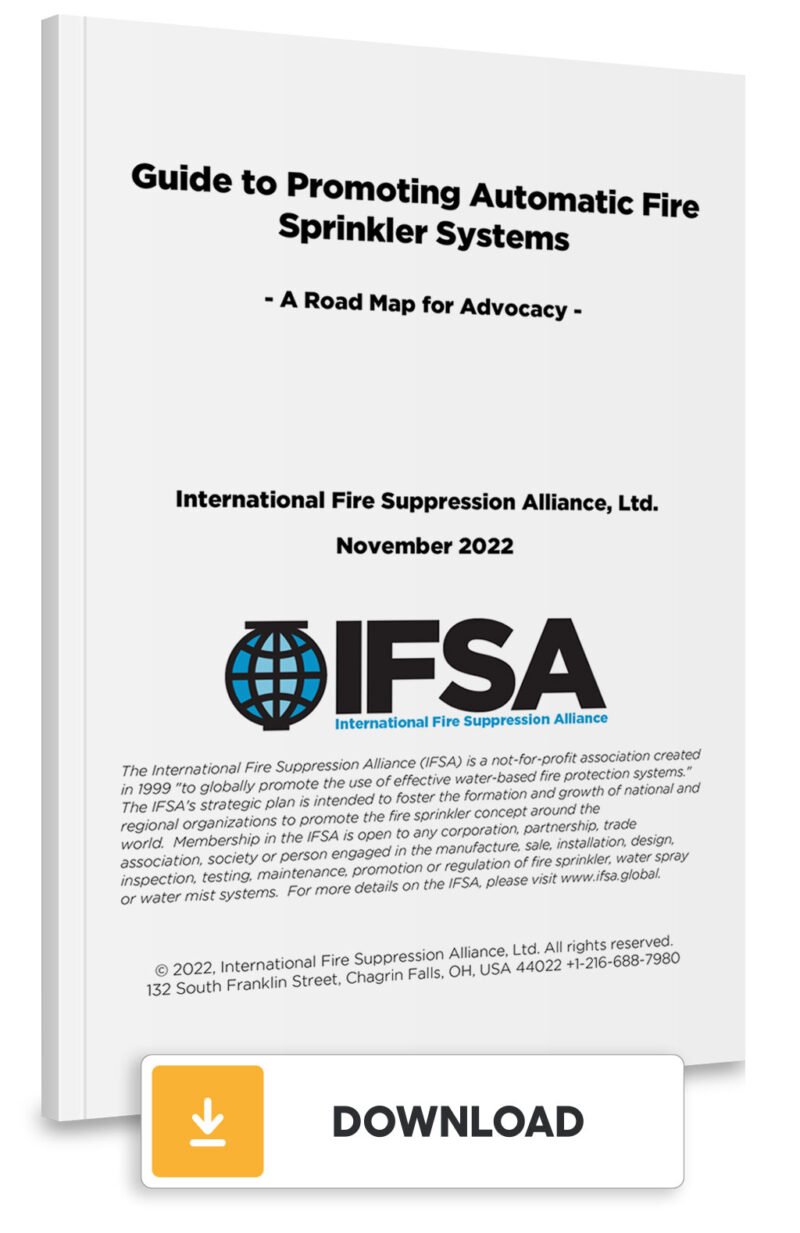Guide to Promoting Automatic Fire Sprinkler Systems: Developing a Fire Code Where None Exists

Enter your email to download the full Guide.
Establishing a fire code for a community, jurisdiction, or country that doesn’t have well developed regulatory processes already in place for building or fire codes can be complex, but it is critical for public safety and property protection. In most situations, the regulation that does exist is limited to specific occupancies or hazard types where prior tragedy or industry-specific issues justified such regulation.
For advocacy groups in these locations or situations, there are several key steps that can be considered. To that end, following are “12 Rules for Developing an Effective Fire Code” that could apply in these situations. These 12 rules were presented as suggestions to regulatory authorities in Mexico by the Mexican sprinkler association AMRACI in 2021.*
12 Rules for Developing an Effective Fire Code
The 12 rules below appear in chapter 6 of the IFSA Guide to Promoting Automatic Fire Sprinkler Systems: A Road Map for Advocacy. Download the full Guide by entering your email address to the left.
- A fire code must be mandatory with specific penalties set out for violations, which will help ensure compliance.
- A fire code should be part of the mandatory requirements that must be met before a new or extensively renovated building is allowed to be occupied, or before a change of use is permitted in an existing building.
- The fire code should be freely accessible.
- The authorities responsible for the various stages of drafting, reviewing, and enforcing the fire code should be fully defined. There should be authorities for
-
- Preparing the code and reviewing it
- Approving and sanctioning of the code
- Enforcing the code
- Issuing the authorization to use the property
-
- There should be a code revision process, with defined review and revision cycles, to ensure the code is updated to reflect changes in technology and emerging fire safety risks within the built environment.
- The code writing and revision process should be open to the general public, who should have the right to propose changes. The process should be transparent – with the reason for acceptance or rejection of any proposal being documented and published.
- The code should be standardized wherever possible, while also accommodating the particularities of the different regions of the country. A national scope is preferable unless more limited jurisdiction is warranted due to the large size of the country, dissimilar regions, or a large number of administrative entities (states, provinces, etc.).
- If there are multiple fire codes in a country, efforts should be made to coordinate between them to use similar model criteria, even if they are not identical.
- A prescriptive fire code is preferred unless the level of knowledge of all involved in fire protection in a given country is high and balanced between AHJs, professionals, and end-users, in which case a performance-based code could be an option.
- The fire code should preferably be a standalone document whose primary purpose is fire safety. If not possible, an acceptable, but less desirable option, is to be a sub-section of the building code.
- The primary objective of a fire code should be life safety, but property protection and environmental protection should be considered as objectives as well.
- The requirements of the code should be proportionate to the risk – being sensitive to the fact that the code should not add unbearable costs to the construction process or ongoing operations, but should also take into account that a higher level of safety usually means additional costs.
When proposed code language is developed, consideration should also be given to including design alternatives and incentives for fire sprinkler systems, which is outlined in Section 4.5 of the Guide. (Enter your email address near the top left to download the full Guide.)
Developing a comprehensive fire code where none currently exists requires careful consideration and collaboration among various stakeholders. With the right approach, advocacy groups can help effectively develop fire code that protects lives and property while promoting overall safety.
Watch for the next blog post in this series based on the Guide. It highlights contents of chapter seven, “Dealing with a Performance-Based Code Environment.”
For more information about strategies to promote the greater use of automatic fire sprinkler systems, enter your email address above to download the full “Guide to Promoting Automatic Fire Sprinkler Systems: A Road Map for Advocacy.”
